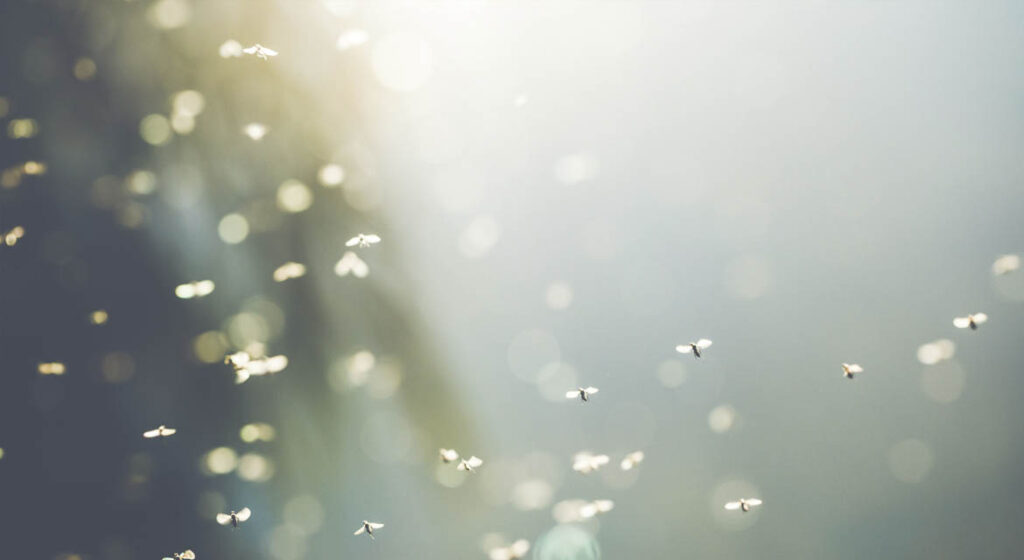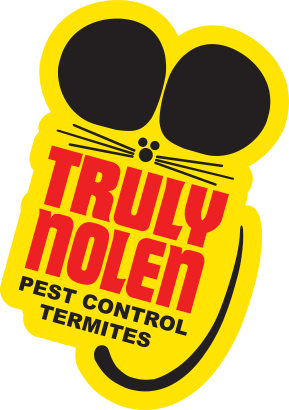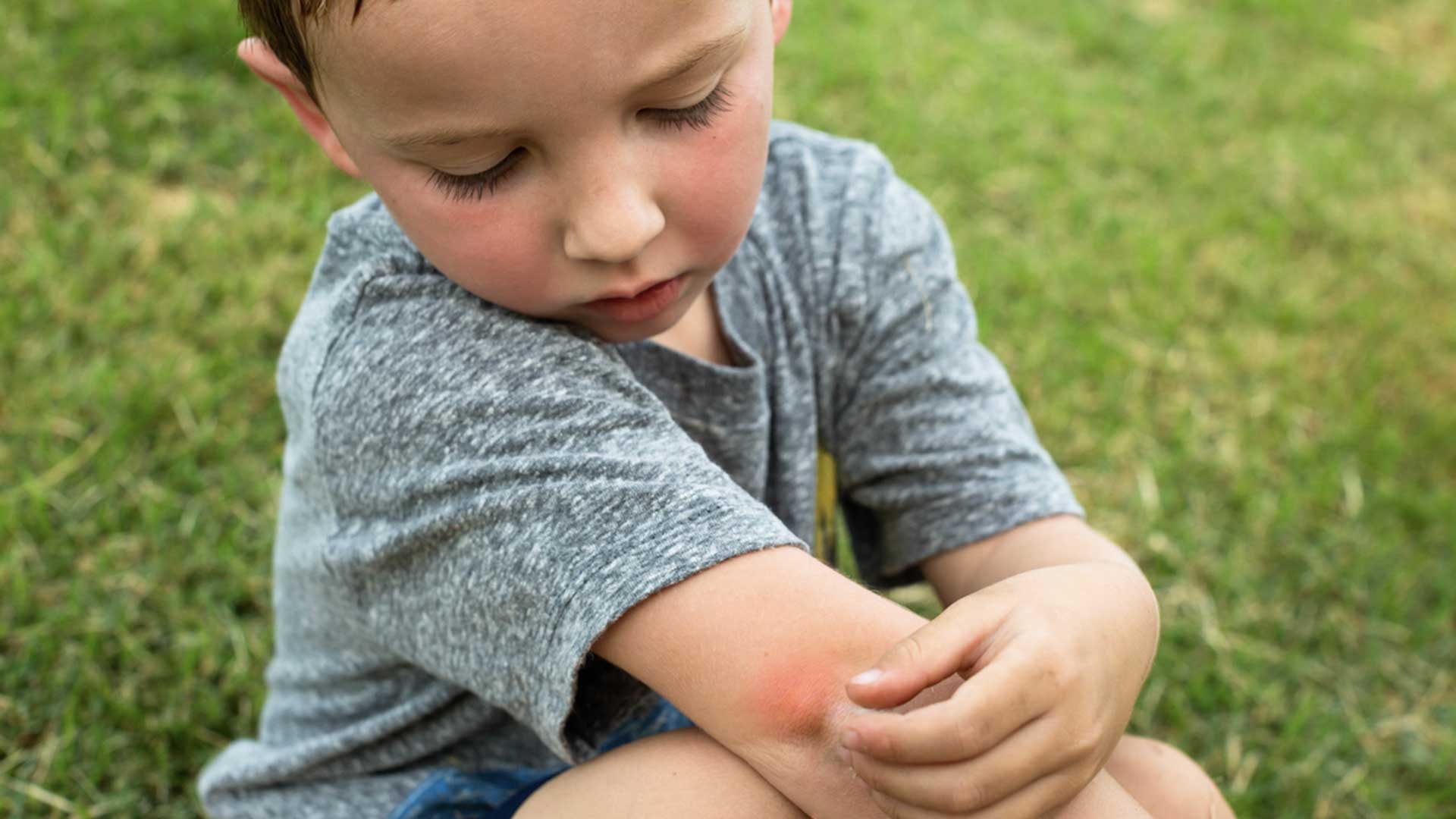
Gnat Bites: Treatment and Prevention
Gnats are small flying insects that are often mistaken for fruit flies or mosquitoes. They have slender bodies with long legs and antennae, as well as transparent wings that allow them to fly short distances. While some types of gnats are harmless and even beneficial to plants, others can cause itchiness and irritation to people and pets. Here are three key points to keep in mind:
- Find relief and promote healing with effective remedies and treatment options for gnat bites, addressing symptoms like itching, swelling, and pain.
- Learn practical methods to prevent gnat bites, including using repellents, wearing protective clothing, and implementing environmental controls.
- Benefit from expert advice on dealing with gnat bites, including home remedies, over-the-counter treatments, and knowing when to seek medical attention for severe reactions or infections.
Where Do Gnats Breed?
Gnats tend to congregate around drains and standing water because these areas provide ideal breeding grounds for them. Female gnats lay their eggs on moist surfaces like soil or plant material close to water sources where the larvae will hatch within two to three days.
To prevent gnat infestations from occurring in your home, keep all drains clean and dry by using drain covers or pouring bleach down them regularly. Also, remove any standing water from your property, such as in bird baths or plant pots.
In rare cases, gnats lay their eggs on human skin. If a person has an open wound or sore on their body, it may attract female gnats who are looking for a suitable place to lay their eggs. This can result in painful bites and infections if the larvae hatch inside the wound. Some species of gnats have scissor-like mouthparts that they use to cut through skin and feed on blood. However, these gnats typically prefer to feed on plant nectar.
Can Gnats Spread Diseases?
While most gnat species don’t pose any harm to humans, some types can spread diseases. For example, the black fly is known for transmitting river blindness, which affects people living near fast-flowing rivers in Africa and South America.
Leishmaniasis is a parasitic disease that is transmitted by sand flies in certain parts of the world. Symptoms include fever, weight loss, and skin lesions that can take months or even years to heal.
Bartonellosis is another disease that can be transmitted by certain types of gnats. It is caused by bacteria called Bartonella henselae, which is carried by fleas that infest rodents. When infected fleas bite humans, they can transmit the bacteria which can cause symptoms such as fever, swollen lymph nodes, and fatigue.
The larvae of some types of gnats also feed on dead animals or decaying organic matter which may contain harmful bacteria or viruses. If these larvae come into contact with human skin or get ingested accidentally through contaminated food or water sources, it could potentially cause an infection.

Truly Nolen GUARANTEE
If you’re not completely satisfied, you’ll get a full refund on your most recent service with our 100% money back guarantee.

$50 Off Year Round Pest Control
Truly Nolen is a family-owned company with 85 years of experience providing the best pest control. If you’re not completely satisfied, you’ll get a full refund on your most recent service with our 100% money back guarantee.
Symptoms of Gnat Bites and When to Call a Doctor
Gnat bites are common during the warmer months, especially in humid areas. While most gnat bites are harmless and only cause mild irritation, some people may experience more severe symptoms that require medical attention.
Symptoms of Gnat Bites
Gnat bites can cause red bumps and itching on the affected area. The severity of the reaction depends on various factors such as the person’s immune system, sensitivity to insect bites, and number of bites received. Some people may experience swelling and pain as a reaction. In rare cases, gnat bites can lead to an infection if scratched excessively.
If you have been bitten by gnats, avoid scratching the affected area to prevent further irritation or infection. You can apply over-the-counter creams or ointments containing hydrocortisone or calamine lotion to reduce itchiness and inflammation. Taking antihistamines such as diphenhydramine (Benadryl) can also help alleviate symptoms.
Allergic Reactions to Gnat Bites
While most people don’t experience severe reactions from gnat bites, some may develop an allergic reaction that requires medical attention. Signs of an allergic reaction include irritation, itching, and bumps on the skin similar to those caused by mosquito or flea bites.
In rare cases where someone has a severe allergy to gnats’ saliva or venom, they may develop anaphylaxis — a potentially life-threatening condition that requires immediate medical attention. Symptoms of anaphylaxis include difficulty breathing; swelling of the face, lips, or tongue; rapid heartbeat; dizziness; confusion; loss of consciousness; and shock.
When to See a Doctor
If you experience severe symptoms such as difficulty breathing, swelling of the face or throat, rapid heartbeat, or loss of consciousness after being bitten by gnats, seek medical attention immediately. These symptoms may indicate anaphylaxis and require prompt treatment.
If you have been bitten by gnats and notice signs of infection such as redness, warmth, pus in the affected area, or fever, see a doctor. They may prescribe antibiotics to treat the infection.
Treatment Options for Gnat Bites
While gnats themselves are not harmful to humans, their bites can be irritating. Fortunately there are several treatment options available to help alleviate the symptoms of gnat bites.
Hydrocortisone Cream
Hydrocortisone cream is a topical steroid that can reduce itching and inflammation caused by gnat bites. It works by inhibiting the production of certain chemicals in the body that cause inflammation and swelling. When applied directly to the bite area, hydrocortisone cream can provide almost immediate relief from itching and redness.
Hydrocortisone cream should only be used on small areas of skin and for a short period of time. Prolonged use can lead to thinning of the skin and other side effects. If your symptoms persist or worsen after using hydrocortisone cream, consult with your healthcare provider.
Cold Compress
Cold compresses can also provide relief from swelling and pain caused by gnat bites. Applying a cold compress to the affected area can reduce inflammation and numb the area, providing temporary relief.
To make a cold compress, wrap ice cubes or a bag of frozen vegetables in a clean cloth or towel and apply it to the bite area for 10–15 minutes at a time. Avoid direct contact between ice and skin, as this can cause frostbite.
Cleaning the Wound
Gnat bites contain anticoagulant compounds that can cause prolonged bleeding if not cleaned properly. To prevent infection and promote healing, clean the wound thoroughly with soap and water as soon as possible after being bitten.
If you notice any signs of infection, such as redness, swelling, or pus, seek medical attention immediately. In some cases, antibiotics may be necessary to treat the infection.
Over-the-Counter Creams
In addition to hydrocortisone cream, there are several over-the-counter creams that can provide relief from gnat bites. One popular option is Cutter BiteMD, which contains a combination of antihistamines and pain relievers to reduce itching and inflammation.
Other options include calamine lotion and topical analgesics like lidocaine or benzocaine. Follow the instructions on the package carefully and consult with your healthcare provider if you have any questions or concerns.
Gnat Bite Prevention Tips
If you’re looking for ways to avoid getting bitten by gnats, here are some prevention tips that you might find helpful.
Cover Exposed Skin to Prevent Gnat Bites
One of the easiest ways to avoid getting bitten by gnats is to cover up any exposed skin with long-sleeved shirts, pants, and socks. Consider wearing a hat or using an umbrella if you’re going to be outside for an extended period of time. It’s especially important to cover up if you’re going to be in an area where gnats are prevalent, such as near standing water or in a wooded area.
Use Insect Repellent to Keep Gnats Away
Another way to prevent gnat bites is to use insect repellent. There are many different types of repellents, but not all of them are effective against gnats. When choosing a repellent, look for one that contains DEET or picaridin as its active ingredient. These ingredients have been shown to be effective at repelling biting gnats. Follow the instructions on the label carefully. Don’t apply too much or too little and reapply as necessary throughout the day.
Stay Away from Areas Where Gnats Breed
Gnats breed in standing water, so one of the best ways to avoid them is to stay away from areas such as swamps, ponds, lakes, and puddles. If you need to be in an area with standing water, try to stay away from it as much as possible. If you’re camping, for example, set up your tent on higher ground rather than near a swamp or pond.
To prevent gnats from entering your home, keep the surrounding area as dry as possible by fixing any leaks in pipes or faucets, using dehumidifiers in damp areas, and ensuring proper ventilation throughout your home.
Avoid Wearing Scents That Can Attract Gnats
Gnats are attracted to plant nectar and human saliva. This means that if you’re wearing perfumes or scented lotions, you could be attracting gnats without realizing it, so consider using unscented products. You should also avoid wearing bright colors or floral patterns since these can also attract gnats.
Differences Between Gnat Bites and Mosquito Bites
What Does a Gnat Bite Look Like?
Gnat bites are smaller than mosquito bites, usually around 1–3mm. They appear as small, red, itchy bumps on the skin. Unlike mosquito bites, which are typically round and raised with a clear center, gnat bites can be irregularly shaped and may not have a central puncture point.
What Does a Gnat Bite Feel Like?
The sensation of being bitten by a gnat is often described as a sharp prick or sting. Some people may not even notice when they’ve been bitten because the sensation is so brief. However, within minutes to hours after being bitten, you’ll likely start to experience itchiness and discomfort at the site of the bite.
When Do Gnats Usually Bite?
Gnats are most active during the day when temperatures are warmest. They tend to swarm around their victims before biting them on exposed areas of skin such as arms, legs, and necks. Unlike mosquitoes that prefer to feed at night when their prey is sleeping, gnats will attack anytime they sense movement or carbon dioxide emissions from nearby animals or humans.
Conclusion
Gnats can be bothersome and cause discomfort. If you have been bitten by a gnat, you may experience symptoms such as itching, swelling, and redness. Hydrocortisone cream and a cold compress can help alleviate discomfort from gnat bites.
To avoid being bitten in the first place, wear long sleeves and pants when outdoors, use insect repellent, and avoid areas with standing water where gnats breed. By following these tips and utilizing treatment options when necessary, you can protect yourself from the annoyance of gnats.
Don’t let gnats ruin your outdoor activities. Take control with Truly Nolen professional pest control. Stay safe out there!

$50 Off Year Round Pest Control
Truly Nolen is a family-owned company with 85 years of experience providing the best pest control. If you’re not completely satisfied, you’ll get a full refund on your most recent service with our 100% money back guarantee.
Frequently Asked Questions
Why are gnats attracted to my home?
Gnats are typically attracted to moist environments and decaying organic matter. They may be drawn to sources such as overwatered plants, fruit, and food residue, as well as areas with standing water or dampness.
How can I differentiate between gnats and other small flying insects?
Gnats are small, flying insects with long legs and wings. They are often found in swarms and have a characteristic erratic flying pattern. However, it’s important to note that the term “gnat” can refer to different species, including fruit flies, fungus gnats, or drain flies, which may have slight variations in appearance and behavior.
Are gnats harmful to humans?
Most gnats are considered nuisance pests and do not pose significant health risks to humans. However, some species can bite and cause minor irritation or allergic reactions in sensitive individuals. Additionally, gnats can contaminate food and surfaces if they land on them after being in unsanitary environments. Learn more about gnats
How can I get rid of gnats in my home?
To get rid of gnats, it’s crucial to address the underlying breeding and attraction sources. This includes eliminating standing water, fixing leaks, drying out damp areas, keeping drains clean and covered, disposing of overripe fruits and vegetables, and maintaining good sanitation practices. Traps, sticky tapes, or natural remedies like vinegar or fruit fly traps can also help control their populations. Learn More!
Why do gnats seem to appear suddenly in large numbers?
Gnats are prolific breeders, and their populations can increase rapidly under suitable conditions. Sudden appearances of large numbers of gnats are often due to favorable breeding environments, such as overly moist soil in potted plants, spilled liquids, or decaying organic matter, which provide abundant food and breeding opportunities. Proper sanitation and eliminating these sources can help prevent and reduce gnat infestations.

